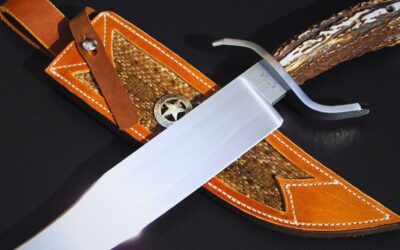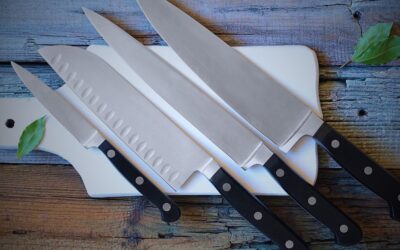Introduction to pocket knife boasts a rose wood handle
A pocket knife is more than just a tool; it’s a companion for many outdoor and everyday tasks. If your pocket knife boasts a rose wood handle, it adds a touch of elegance and uniqueness to its functionality. However, this beautiful wood requires specific care to maintain its aesthetic appeal and durability. In this guide, we’ll explore the essential steps to care for your pocket knife with a rose wood handle, ensuring it remains in top condition for years to come.
Understanding Your Pocket Knife
Before diving into maintenance, it’s crucial to understand the components of your pocket knife. Typically, a pocket knife consists of a blade, handle, pivot mechanism, and locking mechanism. The handle, made of rose wood, is known for its rich color, fine grain, and durability. Rose wood is a hardwood, prized for its beauty and strength, but like all natural materials, it requires proper care to avoid drying out, cracking, or discoloration.
Initial Steps to Take Care of Your Pocket Knife
Inspecting Your Pocket Knife
The first step in caring for your pocket knife is a thorough inspection. Check for any signs of wear, damage, or rust on the blade and handle. Pay close attention to the pivot and locking mechanisms to ensure they function smoothly.
Cleaning the Blade
Regular cleaning is vital to prevent rust and maintain the blade’s sharpness. Use a soft cloth or brush to remove dirt and debris from the blade. For more careful cleaning, a gentle cleanser arrangement can be utilized. Ensure the blade is completely dry before storing it to avoid rust formation.
Cleaning the Rose Wood Handle
Materials Needed for Cleaning
To clean the rose wood handle, you’ll need:
- Soft cloths
- Mild soap solution
- Warm water
- Toothbrush (optional for intricate designs)
Step-by-Step Cleaning Process
- Wipe the Handle: Use a soft, damp cloth to wipe down the rose wood handle, removing any surface dirt.
- Scrub Gently: For stubborn grime, dip a cloth in a mild soap solution and gently scrub the handle. A toothbrush can help reach intricate designs or grooves.
- Dry Thoroughly: Use a dry cloth to remove any moisture, ensuring the handle is completely dry.
Oiling the Rose Wood Handle
Importance of Oiling
Oiling your rose wood handle is essential to maintain its luster and prevent it from drying out. The oil penetrates the wood, enhancing its natural beauty and providing a protective barrier against moisture and dirt.
Best Oils to Use
Natural oils like linseed oil, tung oil, or mineral oil are excellent choices for rose wood. Avoid using synthetic oils or those containing harsh chemicals.
How to Apply Oil
- Apply a Small Amount: Pour a small amount of oil onto a soft cloth.
- Rub into the Wood: Gently rub the oil into the wood, following the grain. Ensure even coverage.
- Let it Soak: Permit the oil to splash into the wood for a few hours or short-term.
- Wipe Off Excess: Use a clean cloth to wipe off any excess oil, leaving a smooth, non-greasy finish.
Polishing the Rose Wood Handle
Why Polishing is Necessary
Polishing not only enhances the handle’s shine but also adds an extra layer of protection against dirt and moisture.
Choosing the Right Polish
Select a wood polish that is suitable for hardwoods and free from harsh chemicals. Natural wax polishes are a great option.
Polishing Techniques
- Apply Polish: Use a soft cloth to apply a small amount of polish to the handle.
- Buff the Handle: Buff the handle in circular motions, ensuring an even application.
- Shine: Continue buffing until the handle shines and feels smooth to the touch.
Sharpening the Blade
Tools for Sharpening
Invest in a good quality sharpening stone or a professional knife sharpener.
How to Sharpen Your Pocket Knife
- Choose the Right Angle: Typically, a 20-degree angle is suitable for pocket knives.
- Use the Stone: Run the blade along the sharpening stone, maintaining the angle.
- Alternate Sides: Alternate sides to ensure an even, sharp edge.
- Test the Sharpness: Test the sharpness on a piece of paper or your fingernail. If it cuts smoothly, you’re done.
Storing Your Pocket Knife
Ideal Storage Conditions
Store your folding knife in a dry, cool spot. A knife case or pouch can provide additional protection.
Avoiding Common Storage Mistakes
Avoid storing your knife in damp or humid conditions, as this can cause rust. Also, refrain from leaving it in direct sunlight, which can dry out the rose wood handle.
Protecting the Knife from Moisture
Effects of Moisture on Rose Wood
Moisture can cause rose wood to swell, crack, or warp. It can also lead to rust on the blade.
Preventive Measures
- Keep your knife dry.
- Use silica gel parcels away regions to assimilate dampness.
- Regularly oil and polish the handle to create a moisture barrier.
Handling and Usage Tips
Proper Handling Techniques
Handle your pocket knife with care, avoiding drops or impacts that could damage the blade or handle.
Safe Usage Tips
- Always cut away from your body.
- Ensure the blade is locked in place before use.
- Keep your fingers clear of the blade path.
Periodic Maintenance
Schedule for Regular Maintenance
Set a regular maintenance schedule to inspect, clean, oil, and sharpen your pocket knife. Monthly maintenance is typically sufficient for regular use.
What to Look for During Inspections
Check for signs of rust, blade dullness, or handle damage. Address any issues promptly to forestall further harm.
Dealing with Damage
Common Types of Damage
- Blade Rust: Can be removed with a rust eraser or fine steel wool.
- Handle Cracks: Small cracks can be filled with wood filler; larger cracks may require professional repair.
- Loose Pivot: Tighten screws or seek professional assistance.
Repair vs. Replacement
Minor damages can often be repaired at home. For significant damage, consider consulting a professional or replacing the knife.
Enhancing the Lifespan of Your Pocket Knife
Long-Term Care Strategies
Consistent maintenance is key to extending the life of your pocket knife. Regular cleaning, oiling, and sharpening will keep it in top condition.
Tips for Daily Care
- Wipe the blade after each use.
- Store it properly to avoid moisture exposure.
- Handle with care to prevent accidental damage.
Frequently Asked Questions
How Often Should I Oil My Rose Wood Handle?
It’s recommended to oil the handle every 3-6 months, depending on usage and environmental conditions.
Can I Use Any Oil for the Handle?
No, it’s best to use natural oils like linseed oil, tung oil, or mineral oil. Avoid synthetic or harsh chemical oils.
What Should I Do If the Handle Cracks?
For small cracks, use wood filler. For larger cracks, consult a professional for repair or consider replacing the handle.
How Can I Prevent Rust on the Blade?
Keep the blade dry, clean it regularly, and apply a light coat of oil to prevent rust.
Is It Safe to Clean My Knife with Water?
While you can use a damp cloth for cleaning, avoid soaking the knife in water to prevent damage to both the blade and the rose wood handle.
Conclusion
Caring for your pocket knife with a rose wood handle may seem daunting, but with regular maintenance, you can keep it looking beautiful and functioning perfectly. Remember to clean, oil, and store your knife properly, and it will serve you well for years to come. Happy cutting!
Read More: How to Choose the Perfect Bowie Knife: Expert Tips and Advice



0 Comments